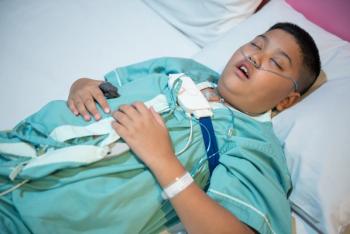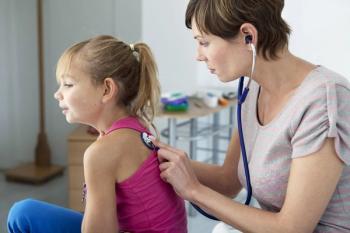
Pediatricians must evaluate various clinical guidelines to determine the best individualized treatment for sleep apnea in their patients.
Mary Beth Nierengarten is a freelance medical writer with over 25 years of experience. Her work appears regularly in a number of print and online publications.

Pediatricians must evaluate various clinical guidelines to determine the best individualized treatment for sleep apnea in their patients.

The intrusion of digital media into the lives of children is causing concern for parents about how best to guide use of this omnipresent technology.

Recommendations for the early introduction of peanut into children's diets might apply to other potential food allergens as well.

Your innate sense of empathy makes you a born counselor and a source of caring, concern, and essential guidance for your adolescent patients. Does your clinical IQ always keep pace with your emotional intelligence when it comes to menstruation issues?

The menstrual cycle can be an important vital sign providing pediatricians with valuable information about health and disease among girls and young women.

New research examined the potential role of Gram-negative skin bacteria in the pathogenesis and exacerbation of eczema, and their effectiveness to treat it.


The early years in an infant’s life set the stage for building one’s ability to learn. Pediatricians play a pivotal role in providing early intervention for any factors that might affect a child’s school readiness and future life course.

The startling increase in the number of adolescents thinking about and attempting suicide is a wake-up call for pediatric healthcare providers to take action and help these children at risk.

A new study examined whether nonpharmacologic interventions for ADHD could support new guidance for their use.

For all patients with recurrent infections, early detection and treatment are critical to avoid the life-altering adverse effects of an underlying, untreated immunodeficiency disorder.

Children who are overweight or obese are potentially at risk for developing diabetes, but there’s more to identifying prediabetes than just obesity.

Pediatricians need a better understanding of the effects of early puberty for girls beyond adolescence into adulthood.

Premature cellular aging induced by glucocorticoids during puberty may cause children’s bone loss, osteoporosis, and fracture risk later in life.

Wheezing in children is often associated with asthma. However, localized wheezing should alert the clinician that something other than asthma may be present.

Pediatricians have had concerns about the known risks of marijuana use in children. What’s next for kids with cancer?

Health illiteracy is widespread across all populations, but it has the extra burden of language and cultural barriers in diverse and underserved populations. Here’s how pediatricians can help.

Stratifying tumors by their clinical characteristics and underlying biology will enable future targeting of specific therapies for glioma in children.

Phase III clinical trials of new antiepileptic medications show promise for reducing frequency of convulsive seizures in children.

New research looks at the role of maternal-placental-fetal interaction on cognitive function and disease.

A new device for the heart is designed to accommodate a child’s growth, potentially improving the success rate of a valve repair and reducing the need for more operations.

New guidance for pediatric hypertension makes it easier for primary care physicians to identify children and adolescents with high blood pressure and manage them in an appropriate manner.

Visually oriented social media platforms created by their peers can have a significant negative impact on adolescents’ body image.

Early detection of hearing status in children is critical to prevent the significant detrimental effect on cognitive development it can have if not appropriately addressed.

What causes chest pain and syncope in children and adolescents, and how can pediatricians recognize and eliminate the causes that may lead to significant morbidity or even death?

Because the burden of atopic dermatitis in children is significant and can adversely impact a child’s normal socialization development, accurate diagnosis and effective treatment are vital.

Bacteremia is now a rare event in previously healthy children aged 3 to 36 months because of the introduction of routine immunization with the pneumococcal conjugate vaccine (PCV).

Among concerns with administering these multiple and frequent immunizations in young children are the potential pain and adverse effects associated with injections. Along with inducing pain in some children, the early negative experience of needle-related procedures can interfere with adherence to immunization schedules and create long-lasting effects of anxiety and stress around needle-related procedures that remain into adulthood.

Although penicillin allergy is the most commonly reported medication allergy in children, the true incidence of this allergy in children is low with data suggesting that the large numbers of adverse drug reactions reported by parents as signs of an allergic reaction, such as rash or diarrhea associated with antibiotics, may not be consistent with a true allergic reaction.

As the number of infants and children developing peanut allergy continues to grow, so does the need for pediatricians and other primary care providers to understand current recommendations on how best to prevent this allergy.